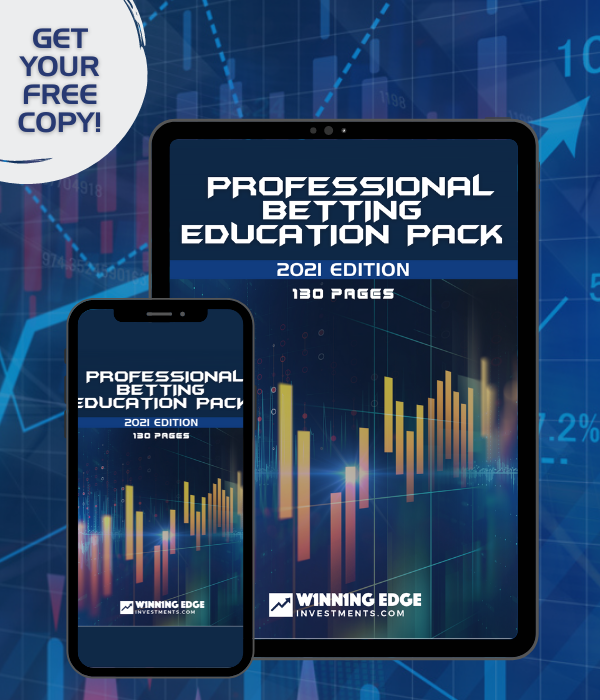
Dean Evans runs the Trial Spy service (Australia's most profitable horse racing tipping service in history, with over $66,000 profit since inception).
Over time his approach to spotting winners has evolved. In the early days he used traditional form analysis, before discovering the huge edge available focusing on barrier trials and identifying horses with huge upside.
These days he has taken his analysis even further and incorporates wide-ranging database analysis to hone his selections.
We thought this would be a great opportunity to ask Australia’s most profitable tipster exactly how he does it and what advice he might have for punters looking to gain an edge.
How did you get introduced to the world of punting?
My father bred a few handy racehorses. One was a mare who won 11 races, and won on all 4 Sydney metro tracks which is a rare feat for a mare. Another won a few staying type races and almost qualified for the Melbourne Cup, and there were a few other city class runners, so I suppose I caught the racing bug from following those horses.
My father worked for a few bookmakers back in the day as well. He was always mathematically inclined, as was I, so I’ve always had an interest firstly in racing but then in wagering. I can remember ringing up the TAB using my dad’s betting account as young as probably 12, pretending to speak in a deep voice and placing bets!
I recall at around age 16 doing the form for a race in NZ, was on an absolute bog Heavy 10 track and I worked through the horses and knew there were only 3 horses in the race who could handle such a wet track. I ignored all other form lines or references and boxed the 3 in a trifecta. It cost me $6 and I won $8,000, which was a lot for a 16 year old. It bought me my first car, but importantly taught me that you can win at the game if you do the research and can beat the market. It’s possible, although time has taught me it’s by no means easy.
Most of us know about your ability to spot value horses through barrier trials. Was that where you first got started in racing?
I started doing the usual form assessment that others did, but with trials I found a niche and saw enormous profits generated as a result. I used to put each horse into a black book and actually had a spreadsheet where I would keep track of all the results, using a rolling bank.
So I started with a $10k bank and betting 1% of it each time, hence starting with $100 per trial blackbooker. I would then start increasing the bet size as the bank increased. Believe it or not on the spreadsheet the $10,000 bank actually got up to over $1,000,000 so I knew I had something there.
I started selling the selections to a very limited number of members and it proved to be an incredibly popular and successful service, only able to take an intake of new members once a year. That has continued to this day with the service making over 660 units profit in 5 years 10% POT, so more than doubling the betting banks of each member every year.
A 100% return on money is certainly well above what you’ll get from a bank these days (they offer maybe 1-2%), and even Warren Buffet – the best share investor in the world – usually only generates 20% return on his investment each year. So that’s where the potential opportunity is in investing in horse racing.
Where does the edge come from in identifying strong performers in barrier trials?
Most of the larger punters use databases that automatically generate ratings and are heavily weighted towards race form. Trial form is difficult to incorporate into their models without a high degree of subjectivity, which is something the large syndicates betting throughout Australia prefer to avoid as much as possible.
As a result there is an edge available to those willing to put the time and effort into the trial niche. The service has had 100/1 ($450 on Betfair), 60/1, 50/1, 40/1 winners etc, and we’ve found future champions & stars such as Winx, Redzel, Chautauqua, Zoustar and Sunlight and no less than 4 Golden Slipper winners from their first starts, so it can be an enjoyable and rewarding pastime.
For those newer punters out there looking to find an edge, do you have any suggestions when it comes to watching trials?
It’s a mix of art and science. It’s about identifying horses who could be 2yo’s that look well above average, or maidens that are trialling in incredible time, or horses resuming from a spell who compared to trials or races from previous campaigns that have improved significantly, either by maturing or sometimes transferring to a new stable.
Knowing the way that trainers usually trial their horses – some ride them out, others give them easy trials, etc. – allows you to spot when one of their horses trials well above the norm.
Some trainers’ horses trial much better than they race, and others race much better than they trial. Understanding this is critical to accurately assessing the merits of a trial performance. Similarly, data on times versus average pars, and other times on the day, and of course assessing whether the horse has been tightly restrained or heavily ridden out, is all critically important.
It appears that in recent times you’re started doing a lot more work with databases and finding winners that way. Can you tell us how you found your way into that after starting out with trials and watching a lot of video replays?
Having read a lot of books on famous punters it was clear that there were two key types of horse racing punters. One one side there are ‘Trip Handicappers’, who mainly use their eye and video watching to handicap horses, and then there’s the ‘Class/Speed/Weight Ratings’ punters, who use data.
A lot prefer to do one or the other. Having been a ‘trip handicapper’, I decided to add data analysis into the mix to get a complete picture of the respective merits of each runner and have the ‘best of both worlds’.
What sort of process should a new punter use to start looking for an edge using a database?
The key is to identify where the data has an edge over the marketplace. You can test theories and see what works and what doesn’t using past history as a guide.
A lot of people, for example, build models that favour inside barriers. This has resulted in a situation where outside barriers are actually under bet, and inside barriers are over bet. These types of shifts occur regularly, so one must always be continually refining and analysing to determine whether an edge that existed previously still exists now.
Do you feel there is an edge using data when there are some very big punters and syndicates around with the same, if not better, data?
It’s not just the data that is the advantage (although it is an advantage over the 98% of mug punters), but how you use it. Give five people a form guide, and they can come up with five different selections in a race. Give five people a database, and they can also come up with five different selections in a race.
It ultimately comes down to how you weight each of the variables of data. Each user will weight the myriad of 100+ data points available on a horse in a race differently, so even if users had the same data they would still generate different results.
Once you’ve developed the model there is also the betting strategy. Some bet early, some bet late; some bet win only, some each way, some place only, and some through exotics. All of these variables and scenarios are what creates the markets.
Throw in changing track conditions, track bias, mounting yard assessments, media information, inside stable information, bookies balancing their books, and Betfair backers laying off and you have a vibrant marketplace with opportunities for all to take advantage of at various times. How and when you bet is usually as important as what you bet on, a fact that might surprise a few, and a reality that most underestimate.
Thanks for your time Dean. If you're interested in learning more about the Trial Spy service, click on the following link: https://www.winningedgeinvestments.com/products/trial-spy/









